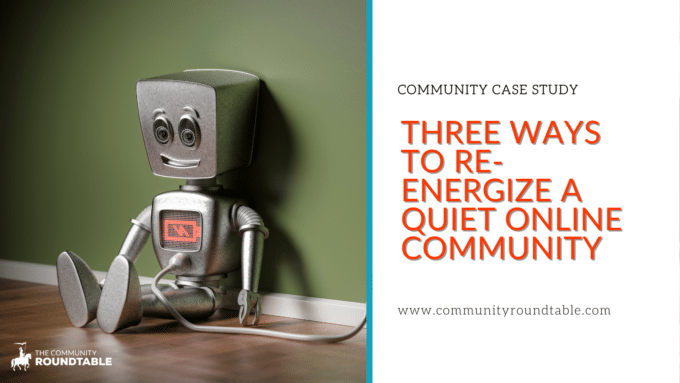
Inheriting a community with 39,000 members sounds like a dream come true, except for when the engagement rate is <1% — oh, and a lot of the members are upset because they were moved to a new platform without warning or resources. Welcome to the world of Extreme Networks when Sam Pirok started as community moderator.
On top of figuring out how to make the community valuable and engaging for its members, Sam had an additional challenge: She’d never worked in community before. Her background was in technical support, so she approached the large, quiet, and angry community with a logical question: Why are they coming here and how can I help? Here are the three steps Sam took to help get her community back on track, talking, and thriving.
Temperature check: Surveying the members
The only way Sam could determine why members were coming to Extreme Network’s community was by asking them. She put together a survey for the community members and let them tell her what they felt the issues were.
“You have people out there who are using your product and want to tell you their opinion,” she says. “You’d be surprised at the type of meaningful ideas that can be brought forth.”
As the results came in, she formed a game plan:
- Show, don’t tell. Sam replied directly to members who left comments in the survey — the data was being collected and examined by a real person who cares and wants to help.
- Do what you can. Sam built trust with the members by solving any low hanging fruit pain points as quickly as she could.
- Know your limits. Sam learned about pain points that were beyond her control — company policy, for example. While she might not have been able to solve those issues outright, she at least learned what areas she could avoid making worse.
The survey also helped Sam get a better understanding of who she might be able to turn to for help.
Finding allies: Paging all super users
Even in the quietest communities, you’ll find members who are out there actively contributing to their group. Sam’s community was no exception, and through the survey she was able to identify the super users she could use as allies and advocates when it came to making the community more valuable for its members.
“Getting the 18 super users didn’t seem like it would make a big difference, but those little steps helped a great deal.”
Sam reached out to them individually to introduce herself, and to thank them for their commitment to the group, and realized they just wanted to be heard and acknowledged.
“I thought they would need more, but recognition was a huge factor on its own,” she says. “Saying ‘thank you’ and helping where I could went a long way. Giving them input into upcoming projects was also a big motivator and trust builder.”
As the community started taking off, Sam also began reaching out to frequent employee users to ask their opinions. Some of her questions help her determine user satisfaction with communities in general, like what other communities they belong to and what they do/don’t like about those communities.
“You’d be surprised at how helpful the users in the community can be.”
‘I hear you’: Communication is key
After she had her survey results and her super users, it was time for Sam to get to work.
“You’re there to build trust with your members that someone is going to answer them. If no one is answering, they won’t post,” Sam says. “Your goal is to build a relationship with your members and super users. Let them know you see them out there engaging in the community and thank them for their efforts.Involve them!”
Some tactics Sam found useful for communicating with members includes:
- Templated communications. Templates can help make the process of communicating with members easier, but you don’t want to sound like a robot. Instead of just copying and pasting, Sam uses friendly language in her templates — it sounds like it’s come directly from her — and she knows which actions deserve a more personal response.
“Receiving a template isn’t horrible — it’s still an acknowledgement — but if it’s a real accomplishment, the personal response will be very much appreciated,” she says. “For instance, someone who earns 100 points in a day. They’re obviously very engaged and enthusiastic, and they deserve to be personally acknowledged. It all comes down to quality vs. quantity.”
- Level set expectations. Albert Einstein was the one who determined that time is relative (i.e. the rate at which time passes depends on your frame of reference), which can be problematic if you use generic timeframes with members. After all, “soon” to one person might mean 30 minutes, and half a day to another. Instead, Sam encourages you to provide a specific time frame and stick with it.
“Once you set that deadline, be sure to honor it, whether you have a solution or not. Let the user know what you’ve been doing to try resolving the issue and let them know when you’ll reach out again,” Sam says. “Keep setting and meeting deadlines. It’s a wonderfully effective way to build trust.”
- Communicate, communicate, communicate. There’s no such thing as “over communicating.”
“ Be annoying if you have to,” she says, “but let them know you’re there and working on the problem. Don’t leave anything up to assumption — the assumption won’t be in your favor.”
In a lot of quiet communities — support like Sam’s or otherwise — your members are still there, they just want to know the community will be worth their time, and that they’re being heard when they do interact. By implementing these three tactics, you’ll be able to ensure that your community can start its engagement journey off on the right foot.

